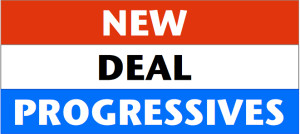The Case for a 21st Century New Deal:
World Class High Speed Internet
Date: January 26, 2014
 Here it is 2014, and those long ago visions
of “high speed” internet and the
“information highway“ are still just
that in some areas of the country.
Even in metropolitan areas, “high
speed” internet providers still can’t
touch some of the speeds Asian countries
are providing.
Here it is 2014, and those long ago visions
of “high speed” internet and the
“information highway“ are still just
that in some areas of the country.
Even in metropolitan areas, “high
speed” internet providers still can’t
touch some of the speeds Asian countries
are providing.
Remember how this was all supposed to play out? Back in the 1990s, high speed internet was supposed to usher in a new era of creativity and productivity for everything from work to school to doctor visits to surgeons performing operations remotely. Health care was supposed to take a giant leap forward with you having a physical checkup over the internet a hundred miles away from your doctor’s office. People were going to be able to watch movies and tv shows unimpeded, do video chats, and start a whole new age with the internet’s technical capabilities. As they say, “the future’s so bright I’m going to have to wear sunglasses”.
Well, that was the dream anyway.
During the 1990s, the US led the world in the internet and its technical innovation. The metropolitan areas were taken care of with the latest internet infrastructure and network upgrades, with the plan being that rural areas would be brought up to speed soon after that.
Then a funny thing happened. In the 2000s, the telecom and cable monopolies
started using caps to limit users for downloads, they started throttling traffic
speeds while charging more. Conveniently, rural areas were forgotten completely.
So the metropolitan areas were covered, but rural area coverage was
spotty at best.
Another thing also happened: the telcos pushed a law that banned local internet, so that only the big names like AT&T and Comcast could provide internet service.
They were also given huge sums of taxpayer money to get broadband rolled out to rural areas so the whole country could be covered. They took the money and said nah.
I live in a rural area and have “high speed” internet access through my local
phone company. Yes, “high speed” is in quotes because that’s what it’s advertised
as for $40 per month with no cap. The trouble with that is it’s not truly high
speed; it’s better than dial-up, but by no stretch of the imagination is it high
speed.
A couple of cases in point recently. First, last year I upgraded one of my software
tools for work. The size was about 8GB and was only offered as a download. On
the first attempt it took about 17 hours and didn’t finish. Customer Support assured
me that it only takes about 45 minutes. Of course it does for them; they
have a dedicated ISDN line where size and speed are no object, not a shared residential
connection like most home internet connections are, where speeds are
much slower depending on the time of the day. Four unsuccessful attempts later
and a few emails back and forth, they sent me the CD discs.
Second, another application upgrade was about 7.5 GB. It took 12 hours to download.
Streaming videos and music are constantly stopping and rebuffering. Depending
on the time of the day, reading static articles can 20+ seconds to load.
Another example is a story reported by Ars Technica titled “Think your internet
blows? Try $300 for 3Mbps and a data cap”. It’s the story of people in rural
Winthrop, Iowa being gouged mercilessly by their ISP EBTC (East Buchanan Telephone
Cooperative). Overages cost $5 per GB. You can read about it here.
The United States created the internet, but now has some of the highest priced,
average speed products in the world. In 2011, the US ranked #26 in global internet
speed. The US keeps falling behind and is barely ahead of third-world countries
now.
Today, because the US monopolies have firm control of the internet in the US,
they are purposely stifling development and usefulness in order to wring as
much money out of people as they can get while providing as little in exchange
as possible. And the government lets them get away with it. This is the same for
all telco companies and cable companies.
None of those dreams from the 1990s will happen with control of the internet in
the hands of the telcos and cable companies.
This arrangement is negatively affecting US global competitiveness.
This is 2014 and the unfettered, almost completely unregulated free enterprise
system is killing America’s competitiveness, and with the recent gutting of net
neutrality by the SCOTUS, the US will fall even further behind globally as telcos
rush to implement 2-tier pricing systems.
Meanwhile, European, Nordic, and Asian countries invested in their internet infrastructures and networks. They have overtaken the US in performance and price. Asian countries are kicking ass with ultra high speeds at around $15 per month for unlimited use; video conferencing is regularly used with no problems; in the US for the average citizen it’s not likely to be used without some latency and delay problems.
Btw, the fastest internet connection in the world is in Sweden at 40 GB/second using fiber and a new modulation technique which allows data to be transferred
directly between two routers up to 2000 kilometers apart with no intermediary
transponders. It was created by Peter Lothberg for his mother so she could
download a full high definition DVD in just two seconds. It’s in the process of being
widely adapted for private and commercial use in Sweden.
The NDP Proposal
The NDP will create 1.5 million new jobs to provide world-class internet service
and cell phone coverage for 100% of the country at reasonable costs to customers,
more in line with the Asian countries ultra high speed service at around
$15/month.
Truly high speed internet service is crucial for the US in business and it’s a game
changer for almost everything from education, healthcare, entertainment, and
government.
These are the steps the NDP will take:
1. Reintroduce competition in the internet marketplace. Use the government to
invest in an employee-owned national internet company that will provide
nation-wide state-of-the-art internet service. Most of the infrastructure is already
built and ready for use. The goal should be to upgrade to the latest technology or
something similar being used in Sweden that provide 40GB/second. Another
goal should be to accomplish this technology upgrade within four years.
Using an employee-owned business approach makes sense in order to provide a reasonably priced service. It makes the organization more responsive to customers because ownership creates a different attitude than employee-based organizations. Btw, cutting out the expensive middle men like AT&T, whose executive teams are paid millions and have exorbitant pensions and stock options is part of the reason prices are so high (note: whenever you hear the term “shareholder”, they’re not referring to stockholders, they’re referring to the executives and their stock options).
2. Re-regulate the telco and cable industries. For instance, does it make sense
that AT&T is in both the phone business and the internet business? Should Comcast
be in the cable tv, internet, and phone business?
Back in the 1970s, the Carter Administration deregulated the telco industry and
broke up Ma Bell to foster competition based on a lot of promises that never materialized. By the 1980s and 1990s, the Baby Bells were already buying each
other up and by the 2000s it back to business-as-usual: no competition with a
few big telcos.
The country needs to visit this issue again and regulate based on what has happened
and what’s needed for the future. We can’t have companies like these hindering
and impeding progress based on their CEO pay packages and incentives.
3. Recover tax breaks (with interest) telco companies pocketed but didn’t deliver
on.
4. To provide interim high speed internet service to remote and rural areas, use
the Post Office to provide towers and wide-spread wireless capabilities for high
speed internet service to residents until high speed internet services is available
permanently.
5. Remove legal barriers that prevent local internet providers from offering high
speed internet service.
6. Encourage local electric cooperatives to offer high speed internet service through their power lines.
Final word, we should have had more than what the big name telco and cable companies have provided by 2014. They have impacted national and global competitiveness with their questionable business practices. When you look at their product and price structure, they look very similar. It’s not hard to imagine they’re actively practicing collusion and price-fixing, which is the complete opposite of competition. This is why regulation and oversight are needed as well as another government-sponsored player in the marketplace to level the playing field and provide some needed competition.


